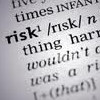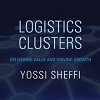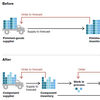 Risk has many facets and has been studied widely in many settings for many decades. But risk in a supply chain management context is a rather new field of study, just as supply chain management is a new field of research. At least it was in 2003, when George Zsidisin decided to write his definition of supply risk. In A grounded definition of supply risk he discusses several existing definitions, investigates how purchasing organizations define their own risk, and develops a holistic definition that encompasses both the causes and the consequences of supply risk.
Risk has many facets and has been studied widely in many settings for many decades. But risk in a supply chain management context is a rather new field of study, just as supply chain management is a new field of research. At least it was in 2003, when George Zsidisin decided to write his definition of supply risk. In A grounded definition of supply risk he discusses several existing definitions, investigates how purchasing organizations define their own risk, and develops a holistic definition that encompasses both the causes and the consequences of supply risk.
George Zsidisin
Anyone studying or researching supply chain risk will have come across Zsidisin’s many articles on the subject, and a small sample can be found under “Z” in my literature review. So far, unfortunately, I haven’t reviewed any yet, and perhaps now is the time to catch up with some of them, especially now that I have personally met George Zsidisin at the ISCRIM 2010 seminar last week. I met many of my review subjects at that seminar, and I guess it is fair to say that many of them will find more of their articles reviewed on this blog in the near future…as it is always more fun to write about (or for) people you know.
Why grounded?
When I first read the title did not realize that the word “grounded” carried a certain meaning and was referring to a special research methodology named Grounded Theory. I simply thought it meant grounded as in based on case studies, which indeed it is but Grounded Theory is more than that. Here the researcher begins with an area of study and allows the theory to emerge from the data. No theoretical framework exists prior to the case studies, which are conducted until the researcher reaches a point of information saturation, where then many of the concepts of the topic of study that are discussed by the case study participants became repetitious. Thus, a structure and a framework are starting to appear from the data itself.
What is supply risk?
In his case study, Zsidisin looked at seven companies, five electronics and two aerospace firms, and how they, i.e. the purchasing department/function manages supply risk. What I found astonishing was the following statement he made:
The majority of firms in this study do not currently have formal definitions for supply risk. However, each of the respondents from those firms had strong conceptions of what supply risk means to their organizations. Case study participants provided definitions of supply risk by its sources and outcomes.
So even if there is no formal and written definition of supply risk, the concept of what it entails is still clear to most companies. In summary, what the companies came up with were these problem areas (with “X” indicating the number of times this answer was given):
- Sources
- Individual supplier failures X X X X X X
- Price/cost increases X X X
- New product development problems X X
- Quality problems X X
- Inability to meet quantity demand X X
- Delivery failures X
- Relationship issues X
- Supplier obligations to other customers X
- Technologically behind X
- Discontinuity of supply X
- Market characteristics X X X X
- Sole source/limited qualified sources X X
- Market shortages X X
- Commodity price increases X X
- Geographic concentration of suppliers X X
- Supplier patents X
- Individual supplier failures X X X X X X
- Outcomes
- Inability to meet customer requirements X X X X X X X
- Negative effect on profit targets X X X X X
- Unable to meet customer specifications X X
- Impedes new product introductions X X
- Missed shipments X X
- Subcontractor failures X
- Loss of customer business X
- Failure to meet customer demand X
- Threats to customer life and safety X X
- Product liability and integrity X X
- Quality failures result in loss of life XX
- Inability to meet customer requirements X X X X X X X
Much of the list is perhaps not surprising, not even the fact that price/cost increases is what seems to worry purchasers more than other potentially more harmful issues. However, what is interesting to note is the fact that threats to customer life and safety, i.e. the companies liability vis-a-vis a third party or customer is of some concern, and that outcomes or consequences of supply failures are something that companies consider in their purchasing strategies.
A definition of supply risk
Armed with the perhaps small but tell-tale sample above Zsidisin then formulates his definition of supply risk as such:
Supply risk is defined as the probability of an incident associated with inbound supply from individual supplier failures or the supply market occurring, in which its outcomes result in the inability of the purchasing firm to meet customer demand or cause threats to customer life and safety.
Supply risk is a multifaceted concept, Zsidisin says so himself. Nonetheless, he managed to capture the full facets by using a relatively small sample, which goes to show that pre-screening and selection is crucial in determining the outcome of case studies.
Critique
Is this a good definition? Yes. And perhaps no. It is a good definition because it views the supply chain from end to end, acknowledging that what you purchase as a supply, in the the end will wind up in some customer’s hand, to which you may be liable, if your product or service is faulty. It is perhaps not a good definition because it is rather verbose, e.g. why is there a need to separate individual suppliers from the supply market as such? On the other hand, if I leave out the words from individual…market occurring something seems to be missing, so it is better left as is.
Further reading
Supply chain risk has many definitions, probably as diverse as the business world itself, but if you would like to study more, Rao and Goldsby (2009) did a very good review and typology of supply chain risk. Bøge Sørensen (2004) made another good classification of supply chain risk, and Vanany et al. (2009) tried to make a complete literature review on supply chain risk management. These three should keep you busy for a while…
Reference
Zsidisin, G. (2003). A grounded definition of supply risk Journal of Purchasing and Supply Management, 9 (5-6), 217-224 DOI: 10.1016/j.pursup.2003.07.002
Author link
- linkedin.com: Professor George Zsidisin
Related
- husdal.com: Supply chain risk – a review and typology












